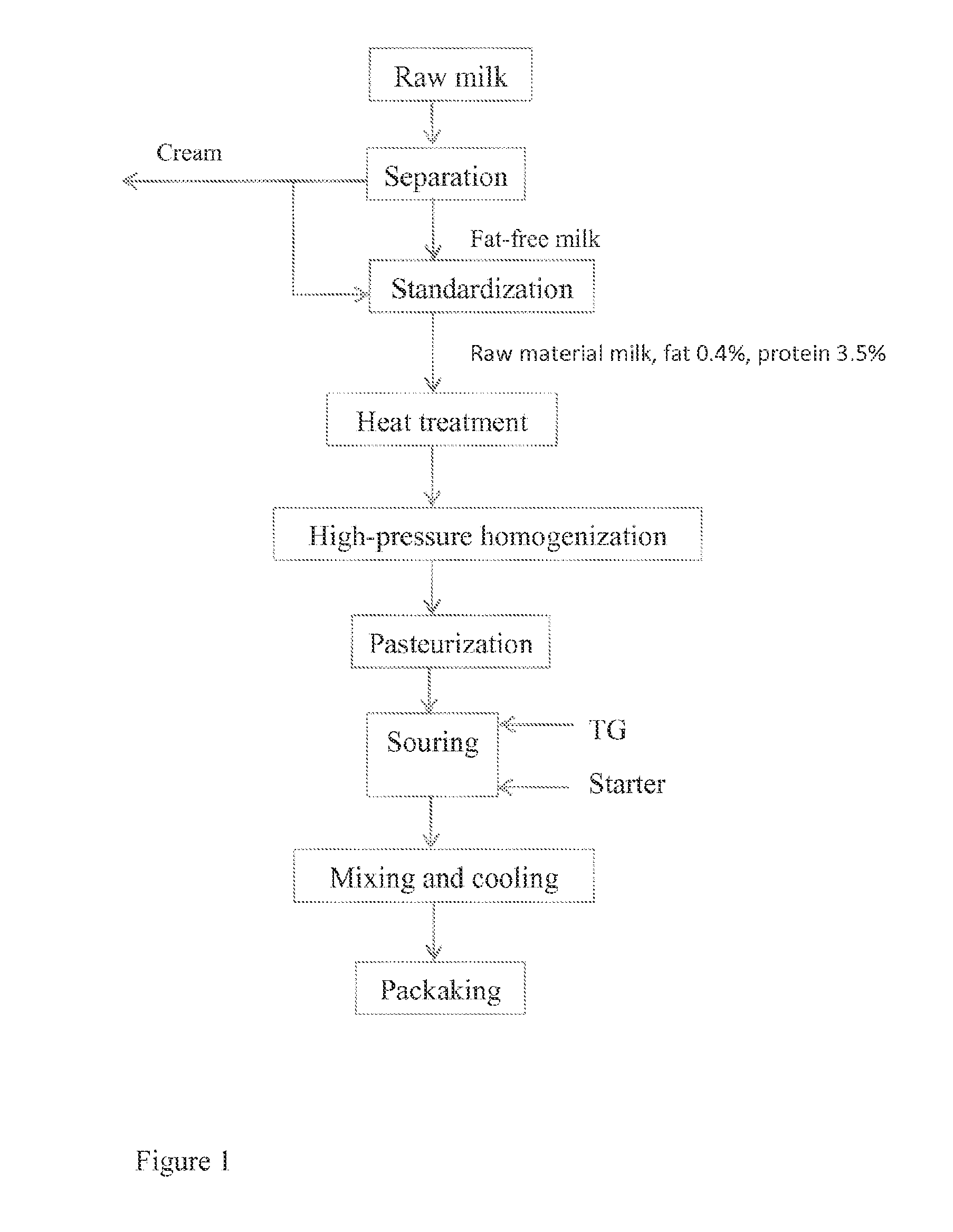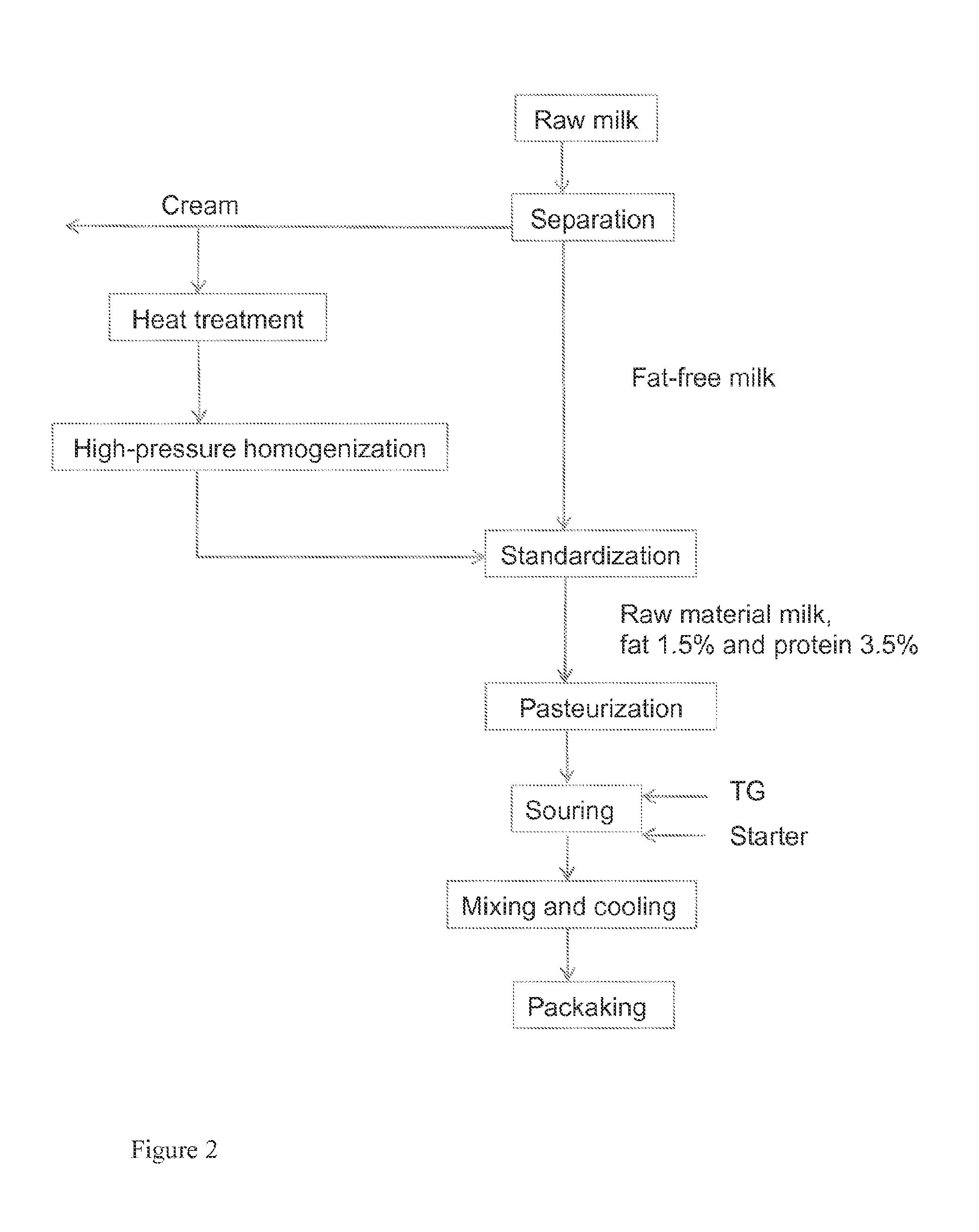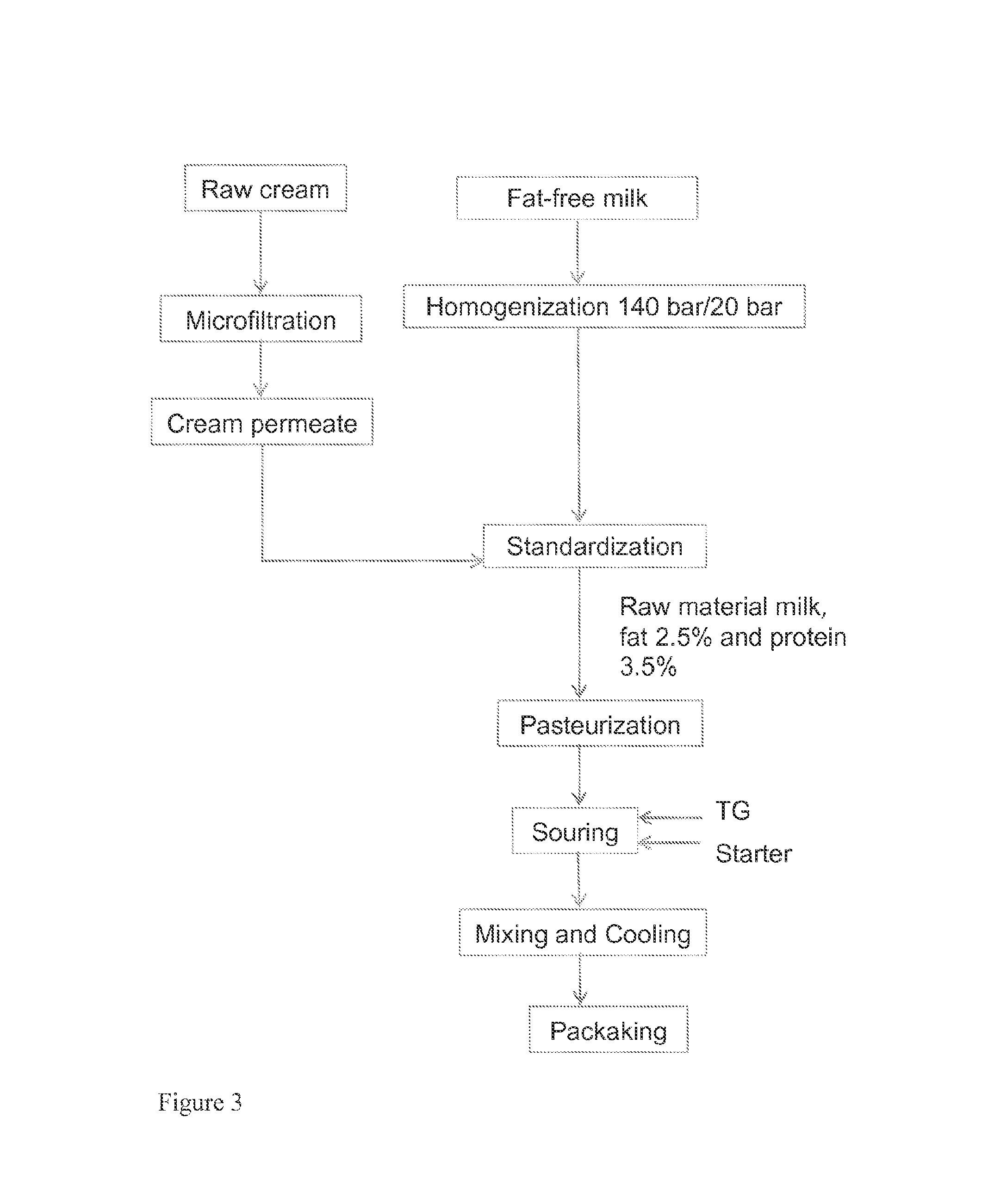Product and process for its manufacture
a technology for soured milk and products, applied in the direction of acyltransferases, enzymology, transferases, etc., can solve the problems of difficult adjustment of raw material components concentration, such as fat reduction, in a product, and achieve the effects of reducing and improving the dry content of milk
- Summary
- Abstract
- Description
- Claims
- Application Information
AI Technical Summary
Benefits of technology
Problems solved by technology
Method used
Image
Examples
example 1
Yogurt Produced of Raw Milk (400 Bar and TG Treatment)
[0144]The test yogurt of the invention was produced of raw milk (fat 4.1% and protein 3.4%) that was high-pressure homogenized at a temperature of 60° C. and a pressure of 400 bar. After this, the milk was pasteurized and cooled to a temperature of 42° C. A TG enzyme (Activa®MP) 0.6 U / g (protein) and starter were added. The mixture was allowed to acidify until its pH was 4.5. The mixture was mixed and cooled to 20° C. and packaged. After this, the mixtures were transferred to a cold room for cooling to a temperature of 5° C.
[0145]The control yogurt was prepared in the same manner except that no TG enzyme was added with the starter.
[0146]The viscosity of the yogurt of the invention was at one week 30% thicker and at three weeks 65% thicker than that of the control yogurt.
example 2
Yogurt Produced of Milk Containing 1.0% Fat (400 Bar and TG Treatment)
[0147]The test yogurt of the invention was produced of milk (fat 1.0% and protein 3.5%) that was high-pressure homogenized at a temperature of 60° C. and a pressure of 400 bar. After this, the milk was pasteurized and cooled to a temperature of 42° C. A TG enzyme (Activa®MP) 0.6 U / g (protein) and starter were added. The mixture was allowed to sour until its pH was 4.5. The mixture was mixed and cooled to 20° C. and packaged. After this, the mixtures were transferred to a cold room for cooling to a temperature of 5° C.
[0148]The control yogurt was prepared in the same manner except that no TG enzyme was added with the starter.
[0149]The viscosity of the yogurt of the invention was 100% thicker than that of the control yogurt during the entire 3-week storage time.
example 3
Yogurt Produced of Milk Containing 0.4% Fat (400 Bar and TG Treatment)
[0150]The test yogurt of the invention was produced of milk (fat 0.4% and protein 3.5%) that was high-pressure homogenized at a temperature of 60° C. and a pressure of 400 bar. After this, the milk was pasteurized and cooled to a temperature of 42° C. A TG enzyme (Activa®MP) 0.6 U / g (protein) and starter were added. The mixture was allowed to acidify until its pH was 4.5. The mixture was mixed and cooled to 20° C. and packaged. After this, the mixtures were transferred to a cold room for cooling to a temperature of 5° C.
[0151]The control yogurt was prepared in the same manner except that no TG enzyme was added with the starter.
[0152]The viscosity of the yogurt of the invention was at one day 85%, at 1 to 2 weeks 50% and at 3 weeks 30% thicker than that of the control yogurt.
PUM
| Property | Measurement | Unit |
|---|---|---|
| size | aaaaa | aaaaa |
| size | aaaaa | aaaaa |
| size | aaaaa | aaaaa |
Abstract
Description
Claims
Application Information
 Login to View More
Login to View More - R&D
- Intellectual Property
- Life Sciences
- Materials
- Tech Scout
- Unparalleled Data Quality
- Higher Quality Content
- 60% Fewer Hallucinations
Browse by: Latest US Patents, China's latest patents, Technical Efficacy Thesaurus, Application Domain, Technology Topic, Popular Technical Reports.
© 2025 PatSnap. All rights reserved.Legal|Privacy policy|Modern Slavery Act Transparency Statement|Sitemap|About US| Contact US: help@patsnap.com



